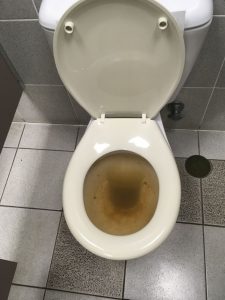
How to avoid house flooding this Christmas
This Christmas I can guarantee that burst plastic water reticulation pipes or burst flexi hoses will create more emotional stress and insurance claims than fires and burglaries combined.
How to avoid house flooding is becoming more challenging as we continually add more and more water connections inside our homes. Insurance companies are experiencing year on year increases in ever-increasing water damage insurance claims. The average insurance claim from internal water damage flooding has increased from $17627 in 2014 to $30361 in 2018.

If you are going away on holiday this Christmas and New Year holiday season and leaving your home empty then I only have one recommendation. And that is before you drive off walk over to your water meter box and turn off the water supply.
How to avoid house flooding is simple if you turn your water off at the council water meter. By undertaking this simple task I can 100% guarantee you will not arrive home to a flooded house caused by a burst water pipe.
I’ve written frequently over the last 10 years about the issues we see every week with homes getting flooded. We’ve witnessed an ever-increasing amount of homes having plastic water pipes and flexi hoses being installed. In turn, we have seen an ever-increasing number of burst flexi hoses and split plastic pipes flooding homes.
In all likelihood even if you have copper water pipes you will still have multiple flexi hoses in your home. They will exist commonly in both residential and commercial buildings under the kitchen sink, under the bathroom vanity basins, under the toilet cistern and under the laundry tub.
Every flexi hose is potentially a ticking time bomb. It has become so common that we attend to burst flexi hoses every day. In 1 hour a burst flexi hose can discharge 1500 litres of water so in 1 day that could be 36000 litres of water. We’ve all experienced how far a spilt glass of water runs on a floor so imagine how far 108000 glasses of water will run.
We have multiple solutions available to prevent flooding in your home ranging from AquaTrip valves at the boundary that turns the water off automatically to individual auto shut off valves for flexi hoses.
If you have any concerns about your water pipes, flexi hoses, fridge connections or valves in your home and don’t want to have one of our plumbers spending part of Christmas Day with you then call us today.
In 2019 as we have done so for the last 43 years we will continue to provide full plumbing, drainage and gasfitting services every day up to and right through the upcoming Christmas holiday and 2020 New Year holiday period.
Our normal emergency plumbing services will be available 24/7 as always on:
- Christmas Day, Wednesday 25 December
- Boxing Day, Thursday 26 December
- New Years Day, Wednesday 1 January
Public holiday diagnostic fees will apply to all call outs on those days except for Whywait Service Partners.
I’m always mindful that Christmas greetings can become superficial but even so everyone here at Whywait Plumbing Services wishes you and your family a Merry Christmas and a prosperous 2020. Remember the best of gifts around your Christmas tree on 25 December in the presence of a happy family with a toilet that flushes and a tap that turns off.












